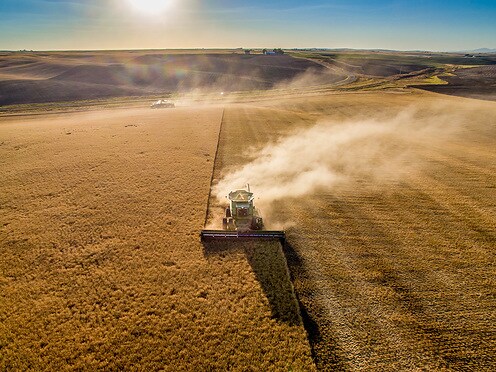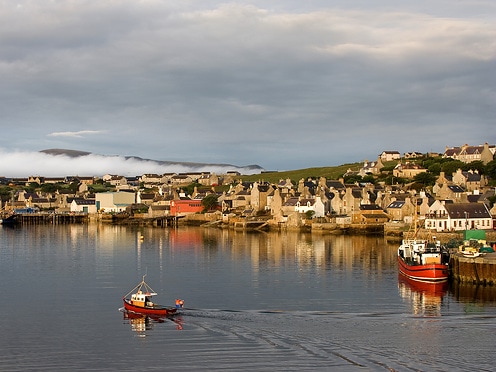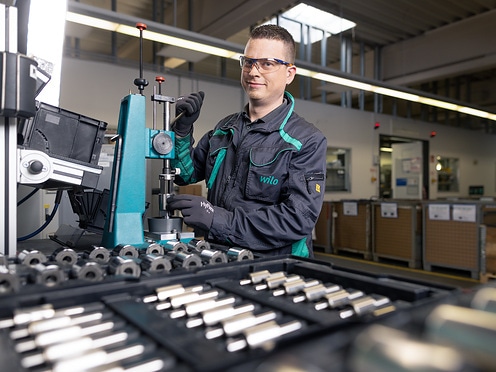Climate change questions: 6 answers
This article features:
The debate about global climate change and its effect on our planet is more relevant than ever today. With the rapid acceleration of industrialisation and globalisation, on the one hand, it has become more and more necessary to understand the phenomenon of global warming. On the other hand, we have to ask ourselves several questions. Above all, is it too late to stop climate change? We are convinced that business plays a decisive role in meeting the global challenges of climate change. Only those who show true commitment can change things. We want to fight climate change as a leading company with pioneering spirit.

How are earth’s climate and weather related and what’s the difference between them?

When we talk about weather, we mean short-term changes in the atmosphere. It describes the current physical state of the atmosphere at a particular time and place. It can change from one moment to the next and be measured and observed at any time.
Climate is very different. It basically represents weather statistics over a longer period – often decades or even millions of years. For this purpose, daily weather reports over longer periods are analysed and statistically evaluated, taking average global temperatures and extreme weather into account. In short: weather is what we experience everyday while climate delineates the average condition over a longer period. It is important to understand this difference because short-term changes in the weather do not necessarily indicate long-term climatic trends.
How do humans contribute to climate change?

Natural processes have always caused the earth’s climate and atmosphere to change. However, by burning fossil fuels as well as through deforestation and industrial processes, human influence on the climate system has been increasing since the 19th century. These activities increase the greenhouse gases emitted in the atmosphere. This intensifies the natural greenhouse effect and leads to global rising temperatures. Of course the global climate also changes because of natural phenomena like fluctuation in solar activity. Nevertheless, there is now consensus in science and society that human activity has been playing a dominant role in the global temperature changes in recent times.
What is the cause of climate change and what are the effects on the climate system?

The main reason behind climate change is human activity, especially burning fossil fuels, land-use changes and industrial agriculture. All of these factors lead to greenhouse gas emissions being released into the atmosphere. More and more exploitation of resources by global trade and increasing demand for agricultural products and wood have also been contributing factors. 9.5 million hectares of woodland are cut down every year, the equivalent of 18 football pitches per minute.
The impacts of climate change are diverse and can be noticed worldwide. The global average temperature has increased by around 1.2 °C since industrialisation began around 1880. News reports show the dramatic effects of this warming trend: shrinking glaciers, melting Arctic Ocean ice and rising sea levels are threatening entire ecosystems and communities. Many islands that are just above sea level could disappear in the coming decades. This not only has an environmental but also social-economic effect as the very existence of many seaside communities and cities is threatened by climate change.
What is the link between climate change and the challenges of globalisation?

Globalisation has a significant effect on climate change and presents serious environmental challenges. The growth in international trade necessitates the transportation of goods. This leads to an increase in greenhouse gas emissions, i.e. CO2 released into the atmosphere. More natural resources are exploited globally than are available, which has further environmental effects. Businesses can produce more cheaply in developing countries. This not only results in cheaper prices for consumers but also in more exploitation of resources and an increase in the associated effects on the environment. A vicious circle thus ensues where greater demand for goods and cheap products leads to more production and thus also more emissions.
What are the effects of climate change and what does the future look like?

Graphic: IPCC, 2023: Summary for Policymakers. In: Climate Change 2023: Synthesis Report. Contribution of Working Groups I, II and III to the Sixth Assessment Report of the Intergovernmental Panel on Climate Change
We face great challenges in the future if the goals of the Paris Agreement are not achieved. Article 2 of the Paris Agreement defines three main goals:
Limiting the increase in average global temperature
Reducing emissions and adapting to climate change
Making finance flows consistent with the climate protection goals
Carbon emissions could increase even further, meaning that the global temperature could be 3.6 °C above preindustrial levels by 2100. The probability is high that extreme weather events – such as droughts, floods and heat waves – will become more frequent and intense. This would have a disastrous effect on our environment and way of life. Such a scenario would also lead to social and economic turmoil as people would have to fight for scarce resources and try to reach regions that are still liveable. The ecosystems that we rely on could be irreparably damaged.
What is Wilo’s approach to climate change questions?

Wilo has recognised the urgency of addressing climate change and reacted with decisive measures. We want to be climate neutral as a company by 2025. We have already managed this at our headquarters, Wilopark in Dortmund, Germany. Our goal: to be a pioneer in the industry. One of the ways we are achieving this is by using highly efficient pumps to reduce our own carbon emissions to 50 million tonnes by 2025. We also demonstrate our commitment to treating our planet responsibly by focussing on sustainable production methods, recycling pumps and improving energy efficiency of our products. Our commitment is making an impact as shown by the Platinum rating awarded to us by the sustainability rating agency Ecovadis. With this approach, Wilo is confronting the impacts of climate change in a solution-oriented manner and setting the bar in the industry.


















